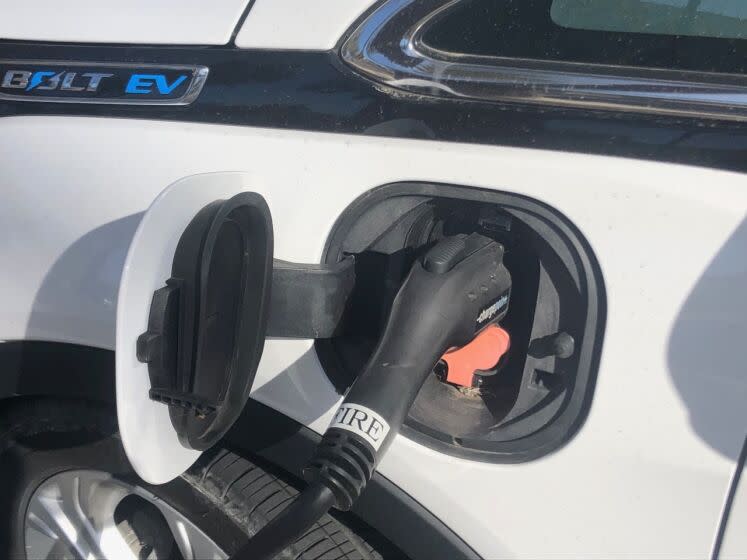California needs to charge electric vehicles during day, not night, to save grid, study says

To successfully ramp up Californians' reliance on electric vehicles over the next decade without overtaxing the state's power grid, more drivers will need to charge their cars during the day, a Stanford study has found.
The state needs to drastically increase and improve public and workplace charging infrastructure that supports daytime charging, which can better utilize solar energy, according to the study, published this week in the scientific journal Nature Energy. Increased charging availability will also make electric vehicle ownership more accessible, the study found.
"If we focus a lot of attention on building out a big public charging network wherever people are during the day — at work, in public places … that will be a big win for the grid," said Siobhan Powell, the lead researcher on the study.
The study, part of Stanford's Bits & Watts Initiative, which integrates researchers with leaders of the energy industry, used modeling to forecast EV charging demands in 2035 across 11 Western states, including California. Projecting that both EV use and renewable energy reliance will increase over the next 13 years, the team found that improvements in public charging infrastructure — reducing dependence on nighttime power-ups — could ensure that plug-in vehicles have the least effect on the power grid.
EV owners are likely to be in high-income brackets and to charge their batteries at home overnight — often taking advantage of incentives offered by power companies to do so. If those charging habits persist as EV use greatly expands, peak electricity demand could be increased by up to 25%, the researchers found.
Though a shift to more daytime charging is not expected to stem the increase in demand, it would move the peak to when California has historically had excess capacity on the grid, thanks to solar power. This shift could also help the West prepare for high stress on its electricity system during heat waves, which continue to push the grid to its limits.
By 2035, the year California has committed to ending the sale of new fossil-fuel-burning vehicles, increased capacity will make daytime solar energy cheaper, said Ram Rajagopal, co-author of the study and an associate professor of civil and environmental engineering and electrical engineering at Stanford.

 Yahoo Autos
Yahoo Autos 